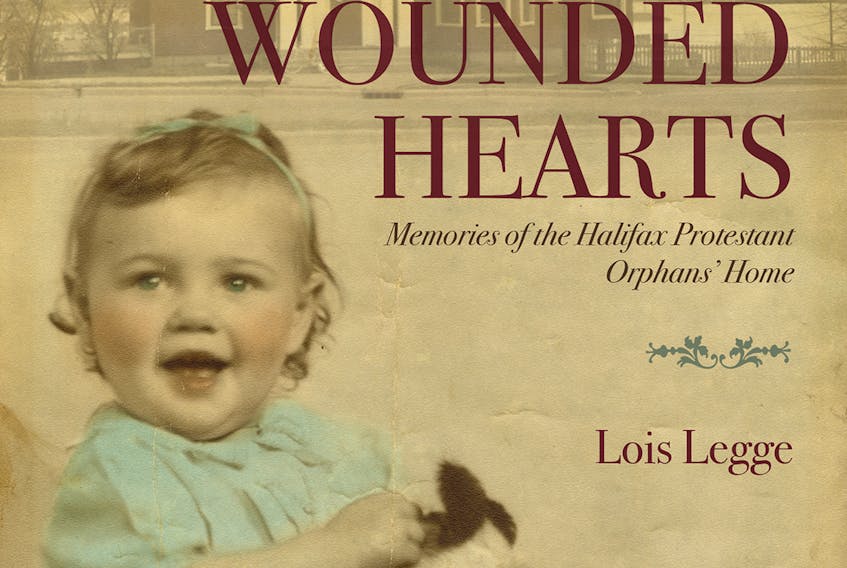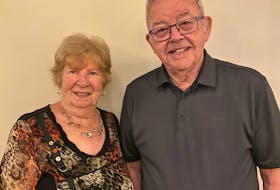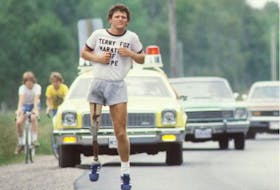Among the yellowed annual reports, financial records and meeting minutes at the Nova Scotia Archives, Lois Legge found the stories of vulnerable boys and girls who lived at the Halifax Protestant Orphans’ Home - an institution that was meant to help them but ended up hurting many of them.
“Looking through some of those old records, I would kind of get emotional just seeing some of the names of the children,” said Legge. “I just wondered: what were their lives like? And feeling sad that their stories would never be known; would never be told.”
In her first book, Wounded Hearts: Memories of the Halifax Protestant Orphans’ Home (Nimbus Publishing), Legge tells stories of a few of the thousands of boys and girls, now older men and women, who lived at the home that operated between 1857 and 1970.
Founded by Anglican minister Robert Fitzgerald Uniacke, the privately-run, government-funded home was a place for children who were neglected or abused at home, or whose parents had died or were too sick or poor to raise them. Through her research and speaking with some former residents of the home, Legge learned that many of the children faced abuse, poverty and neglect, not only before, but during and after their time in the facility.
“It’s a daunting task to take someone’s life story into your own hands and try to tell it with truth and dignity and compassion - and to do it without adding to the hurt,” Legge writes in the book’s preface. “But thinking about their lives as children made me determined to try. And made me hope, in some small way, to help heal these wounded hearts of long ago.”
FINDING SURVIVORS
Legge didn’t find these stories from the old records she found at the archives. Cold, factual meeting minutes rarely mentioned children’s names and more often noted minute details like the curtains that had been washed, lined and hung at the home, initially located on North Park Street. Instead, Legge interviewed former residents, many of whom shared their traumatic memories of being tied to their beds, strapped or locked in closets by the matrons who were charged with taking care of them.
“Everyone I spoke to said: ‘No one ever asked me how I was doing’,” she said. “It is such a privilege actually to be able to tell the stories of the people who are still living, children who really didn’t have a voice back then or they had a voice, and no one was listening.”
Shirley Carter was placed in the orphanage as a toddler. Her aunt took her there after her mother contracted tuberculosis and was taken to a sanitorium and she couldn’t be left with her alcoholic father. Carter told Legge about one matron who tied her to her bed and beat her. Other matrons locked her in broom or vegetable closet as punishment for chewing gum or bickering with other children.
Former resident Joe Gooey told Legge that living at the orphanage was better than living as he once had in a dirty room in the back of a laundry in Truro with his mother who was always drunk and never had enough money for food. At the orphanage he had food and a bed; one he didn’t have to share with his siblings and parents.
NO COMMENT
No one from the province would speak with Legge about the orphanage. “The provincial government has consistently refused to discuss the past or its predecessors’ role in funding or sending children to the orphanage. Or to address the lack of provincial supervision,” Legge writes in her book.
None of the former residents Legge interviewed are seeking financial compensation from the province, but Carter would like to receive a public apology for past wrongs.
Legge’s interest in the home was sparked about a decade ago when a former colleague at The Herald wrote a story about the discovery of bones at the initial site of the home. Archeologists thought they might have been those of a child; later experts determined they were bones of an animal. Legge, who worked for just over 30 years as a reporter and feature writer at The Herald, was curious and stored the idea away.
A few years ago, the idea resurfaced. As a freelance writer, she wrote a few stories on the home’s former residents for Halifax Magazine. One story told about a memorial room dedicated to the children of the home that had been established in the same building that had once housed the orphanage. Located in the city’s North End, the home is now known as Veith House, a place that supports low income families.
“I love getting those stories out in the world,” she said. “It is part of history. It is human history… They teach us things.”
For former residents like Carter and Linda Gray-LeBlanc, who also shared her tragic childhood story with Legge, the trauma they experienced in the orphanage and later at foster homes hasn’t gone away. It has lasted a lifetime.
“You just want to cry all the time,” said Gray-LeBlanc, while visiting Veith House and standing in the room where she once slept as a child. “You just can’t get rid of it. You just can’t get rid of it.”
MORE BOOKS ON THE SHELF
Mi’kmaw author Theresa Meuse’s children’s book The Gathering, with illustrations by Art Stevens, has been shortlisted for the First Nation Communities Read 2019–2020. The book follows Alex, who is attending her first spiritual gathering. Along the way she meets Elders who teach her about traditional Mi’kmaw culture: the sacred fire, drumming, basket and canoe making.
Elementary school counsellor Heather Topshee will be at Halifax Central Library on Nov. 2 at 1 p.m. to read from her new children’s book Every Day is Pink Shirt Day. Illustrated by award-winning artist Laurie Swim, with Nancy MacDonald, the book tells the story of Maya. The Grade 3 student arrives at school on Stand Up Against Bullying Day and finds her schoolmates wearing pink shirts, to symbolize their stand against bullying, but still witnesses unkind behavior in the playground.
Author Lesley Choyce and illustrator Brenda Jones have come up with an inventive way to tell the inspiring story of NHL star Sidney Crosby’s early days in their new picture book Sid the Kid and the Dryer: A Story About Sidney Crosby (Nimbus Publishing).
In her new young adult novel #Not Ready To Die (Common Deer Press), Halifax librarian and author Cate Carlyle tells the story of Ginny and her classmates, after a shooter shows up during first period at Southwestern High School. Told from the perspective of students inside the school, the 126-page novel explores issues of violence and terrifying school shootings.
The 18 years Nova Scotia author Mark Rector spent researching his book, Oh Canada! Our Home and Inventive Land: Canadian Inventors, Inventions and Firsts in Technology and Industry has led to more success than he imagined. Now in its third print run, the book, which tells the history of inventions and firsts in not only technology and industry, but sports and society, has sold thousands of copies across the country. Walter Harris Callow, a veteran of the First World War from Parsborro who invented the first wheelchair bus in Canada to serve veterans, is one of several Nova Scotians included in the book.
Liverpool-based author Vernon Oickle launches his new spooky book More Ghost Stories of Nova Scotia just in time for Halloween. On Oct. 29 at 7 p.m. you will find him at the Maritime Museum of the Atlantic telling tales of the paranormal.









